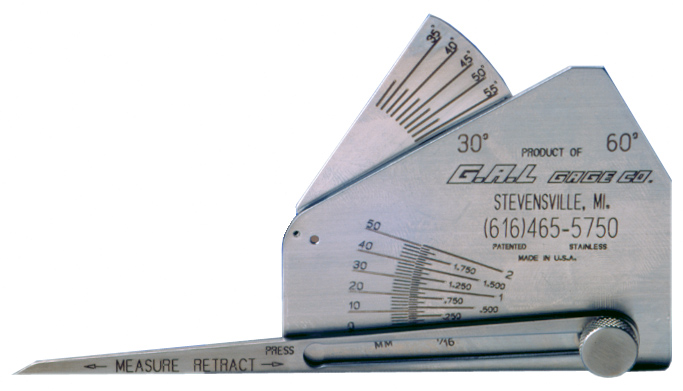The Function of Gauge Fillet Weld in Structural Integrity: What You Required to Know
The Function of Gauge Fillet Weld in Structural Integrity: What You Required to Know
Blog Article
Fillet Weld Style Techniques: Enhancing Joint Efficiency and Visual Appeal for Structural Honesty
In the world of structural engineering and fabrication, the relevance of fillet weld style methods can not be overemphasized. These methods play a critical duty in not just ensuring the performance and structural stability of joints however likewise in improving the total looks of the finished product. By diligently thinking about aspects such as weld account optimization, product option, joint preparation methods, welding process effectiveness, and aesthetic enhancement engineers, makers and approaches can accomplish a harmonious balance between capability and appearance in their welded frameworks. The blend of these components not just leads to robust joints but likewise elevates the visual appeal of the end product.
Weld Account Optimization


Achieving an optimal weld profile involves a thorough factor to consider of aspects such as product thickness, joint arrangement, welding position, and wanted welding rate. In addition, the selection of suitable welding specifications, such as voltage, existing, and take a trip speed, is essential in controlling the form and dimensions of the fillet weld. Making use of innovative welding strategies, such as pulse welding or robotic welding, can additionally refine the weld account to satisfy certain style needs and top quality criteria.
Essentially, weld profile optimization is a fundamental element of fillet weld style that directly influences the general efficiency and integrity of bonded joints in architectural applications.
Product Choice Factors To Consider
When considering product choice for fillet weld style, the compatibility of the base metals is an essential variable affecting the architectural stability of the joint. It is important to select materials that not just bonded with each other properly however additionally possess similar mechanical residential properties to guarantee the load is evenly distributed between the weld and the base steels. Welding products with significantly different buildings can cause problems such as anxiety concentrations, early joint failing, or fracturing.
Furthermore, the atmosphere in which the bonded structure will certainly operate need to be thought about when choosing products. Factors like deterioration resistance, temperature level fluctuations, and exposure to chemicals can you could check here all affect the long life and performance of the weld joint. By choosing materials that appropriate for the designated application and atmosphere, the overall toughness and reliability of the welded joint can be significantly enhanced.
As a result, thorough consideration of product compatibility and ecological factors is vital in guaranteeing the weld joint's strength, durability, and total architectural integrity.

Joint Prep Work Methods
Taking into consideration the crucial function material selection plays in making certain the structural integrity of fillet weld joints, it is vital to implement precise joint prep work techniques that optimize the link between the base steels. Joint preparation is an important action that directly influences the high quality and strength of the weld.
Furthermore, tack welding the parts in location before the last weld aids maintain alignment and lessens distortion during the welding process. By thoroughly following these joint preparation methods, welders can boost the overall efficiency and his response appearances of fillet weld joints while guaranteeing architectural stability.
Welding Process Performance
Effective welding procedures are important for achieving optimum productivity and quality in fillet weld construction. Procedures like gas metal arc welding (GMAW) and flux-cored arc welding (FCAW) are generally made use of for fillet welds due to their flexibility and speed.
Additionally, ensuring appropriate equipment configuration and upkeep is vital for effective welding. Routine calibration of welding machines, assessment of consumables, and upkeep of soldering iron can avoid downtime and revamp, inevitably saving time and sources. In addition, employing experienced welders with proficiency in the particular welding procedure being utilized can substantially affect performance. Well-trained welders are more adept at adjusting specifications, troubleshooting problems, and keeping consistent weld quality.
Visual Enhancement Methods
To maximize the high quality of fillet weld manufacture, executing visual enhancement approaches can play an essential function in making certain accuracy and accuracy during the welding process. Visual aids such as weld size gauges and magnifying lenses can help in evaluating weld accounts and measurements precisely. By incorporating these visual improvement techniques into the welding process, welders can attain not just structurally sound fillet welds however likewise visually enticing results that fulfill industry requirements.

Verdict
To conclude, enhancing fillet weld design entails mindful consideration of weld profile, material selection, joint preparation, welding process performance, and visual enhancement approaches. By implementing these techniques, structural honesty can be boosted while also attaining visual appeal. It is essential to focus on both performance and aesthetics in fillet weld style to guarantee the overall quality and sturdiness of look at this website the joint.
By thoroughly taking into consideration variables such as weld account optimization, material option, joint prep work techniques, welding process performance, and aesthetic improvement makers, approaches and engineers can attain an unified balance in between performance and look in their welded frameworks.In the realm of fillet weld layout, optimizing the weld account plays an essential duty in ensuring architectural stability and efficiency. The weld profile, which consists of the size and shape of the weld cross-section, directly influences the distribution of stress and load-bearing capability within the joint. It is vital to choose products that not only bonded together properly but additionally have comparable mechanical residential or commercial properties to guarantee the tons is equally dispersed in between the weld and the base steels - Gauge Fillet Weld.In verdict, enhancing fillet weld layout includes careful consideration of weld account, product choice, joint preparation, welding procedure performance, and visual enhancement techniques
Report this page